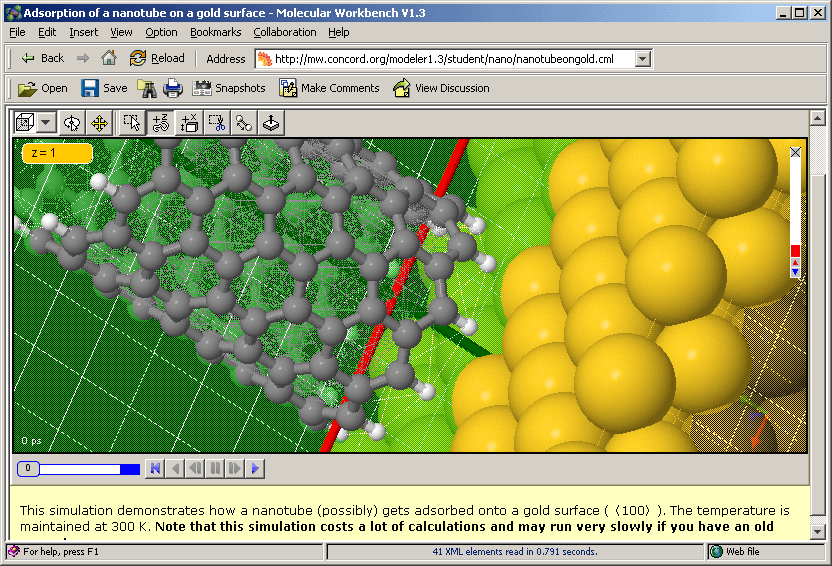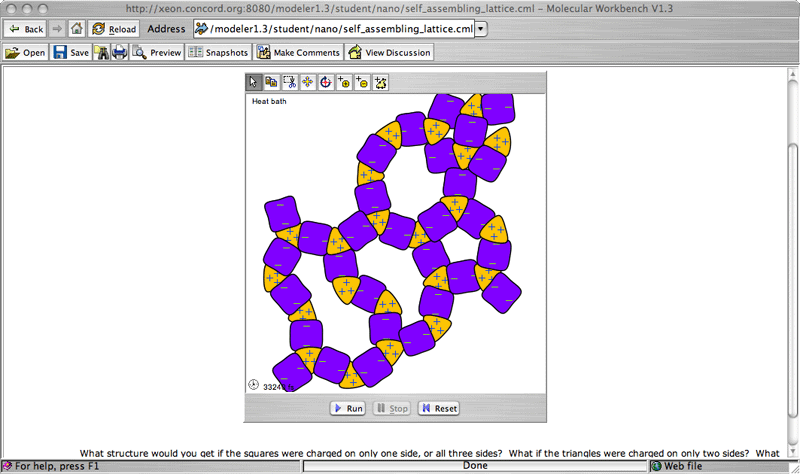Molecular Workbench offers 2D and 3D interactive molecular dynamics simulations for teaching physics, chemistry, and biology.
Molecular dynamics is a computer simulation technique widely used in academic research to assist scientists to discover new materials, new chemicals, and increasingly important, new drugs. Its great educational value was not fully exploited until recently when it can run quickly enough on most personal computers.
Molecular dynamics models can be used as a complementary tool to molecular visualization tools widely used in classrooms, such as Jmol. Unlike most molecular viewers that show static structures, molecular dynamics models show functions of molecules, primarily through visualizing the cause-effect relationships set up by properly-chosen initial conditions or directed by user operations in the middle of a simulation.
You may know nothing about molecular dynamics and think this is not your cup of tea, but don't turn your back to it too quickly. Give it a try. You need no prior knowledge in order to use the Molecular Workbench software. As a beginner, what you need to do is to launch the software, open a page with a model, push the "run" button to start a simulation, and watch it unfolding on the computer screen. A set of VCR-like controls are available to stop, run, and play back the simulation. For those activities that have been carefully scaffolded by experts, all your students need to do is to follow the instructions to the end.

The above screenshot shows an editing mode of the 3D Molecular Simulator.

The above screenshot shows the self assembly of smaller interacting units into different structures due to electrostatic interactions.